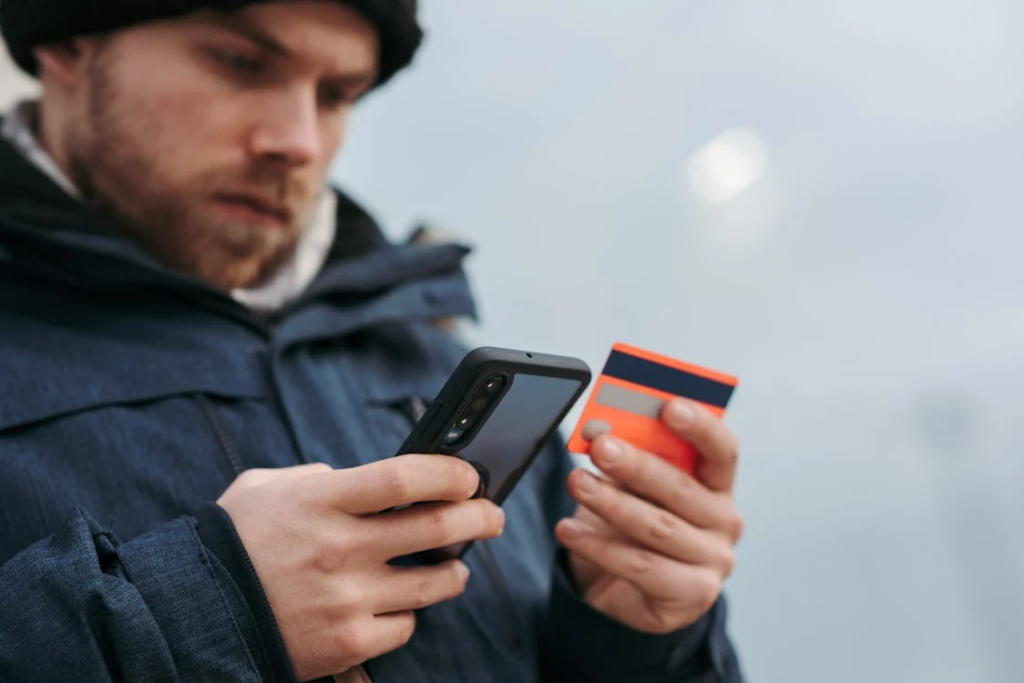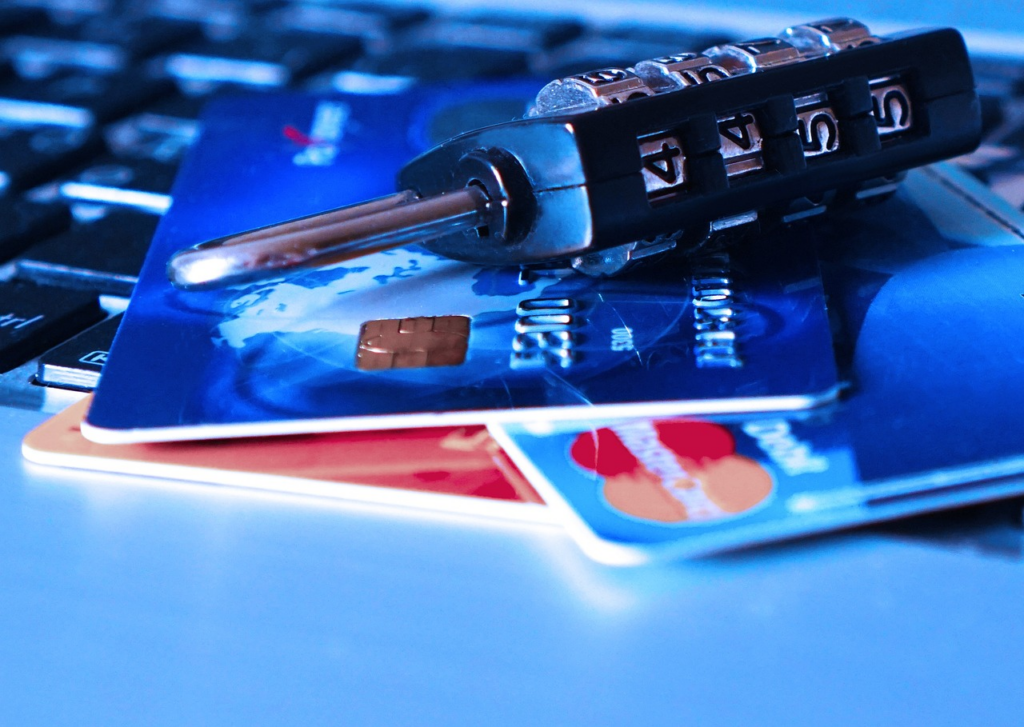Experts say that around 2,200 cyberattacks occur daily, which could lead to up to 800,000 people being hacked in a year. Although many card issuers put measures in place to protect your card from these attacks, you still have a part to play in keeping it safe from hackers.
Cybercriminals employ various tactics to steal your credit card data to take over your account, drain your funds, and commit other fraudulent acts. In this article, we explore how fraudsters steal credit card data, how to protect your credit card from hackers, and what to do if a hack occurs.
Reasons Your Credit Card Keeps Getting Hacked

There are plenty of reasons why your credit card may be hacked multiple times despite your best efforts to keep it safe. Let’s explore a few:
- Your card could be physically compromised—If you carelessly display your card details at a restaurant or during a purchase in the store, someone could secretly take a picture of it. They could also copy out the card information to use for their gain
- Your card may have been skimmed—Criminals sneakily install a card skimmer at ATMs or POS machines to steal credit card data. They’re commonly found at gas pumps in remote gas stations or unmonitored ATMs
- Your phone may be infected with malware—It’s possible that you unknowingly installed malware on your mobile device that allows criminals to access your data and spy on your transactions
- Your card info may be exposed in a data breach—An undetected data breach could also be why you’re experiencing multiple occurrences of your credit card being hacked. Data breaches account for a large percentage of credit card fraud cases since sensitive information often ends up on the dark web for criminals to purchase
Understanding how hackers steal your credit card data can help you protect your financial data against hack attacks.
How Do Hackers Steal Credit Card Data?
Hackers have multiple tactics through which they steal credit card information. They employ both online and offline schemes, including the following:
| Theft Method | Explanation |
| Phishing | Hackers call, email, or text you, pretending to be a trusted source. They present discounted or free offers and assistance to trick you into divulging your credit card information |
| Malware and spyware | Fraudsters embed malware and spyware in flashy ads that you may mistakenly download on your device. Once installed, the hackers can remotely access your device and record your financial information |
| Card skimming | Criminals install skimming devices at ATMs to collect your credit card data when you insert a card. Some card skimmers can even wirelessly record your card data from a distance |
| Shoulder surfing | When in public, a criminal can look over your shoulder while you use an ATM and take a photo of your card. It could also happen when you’re paying at a store or restaurant |
| Public Wi-Fi interception | If you use your card to make payments over public Wi-Fi, criminals could intercept the transaction to steal your data |
| Dumpster diving | Criminals dig through trash to find financial documents or outdated card statements you’ve disposed of. If they obtain this information, they can use it to clone your credit card and use it to their advantage |
Being able to spot these theft methods can help you take better measures to prevent credit card fraud.
7 Helpful Ways To Protect Credit Card Data

Since fraudsters are getting more clever with their schemes, you should take solid precautionary measures to keep your card details from falling into the wrong hands. Here’s how to keep your credit card from being hacked:
- Be cautious of phishing scams
- Use virtual account numbers where possible
- Create strong, effective passwords
- Only use secure websites
- Set up alerts for suspicious activity
- Don’t save your card information on websites
- Protect your physical card
1. Be Cautious of Phishing Scams
Credit card scams come in various forms to trick you into unknowingly sending your credit information to the fraudster. Whenever you receive an unsolicited call or email asking for your financial information, look for the following phishing scam signs:
- Incorrect email addresses—Ensure that the email address is accurate and matches the company’s name. For instance, verify that “Citibank” is not spelled “Citybank” and that it’s from an official domain
- Check for bad grammar and wrong spellings—Phishing scams often include poorly written messages with typos and grammatical errors. If you spot these errors, it’s a sign that you’re dealing with a scammer
- Links, attachments, QR codes—Scammers typically invite you to click on a phony link in their email or text. Clicking on this link can infect your device with malware or spyware, giving hackers access to your information
2. Use Virtual Account Numbers Where Possible
If your credit card issuer offers virtual account numbers, use them where possible. Virtual account numbers give you a one-time card number that becomes inactive once your transaction is complete.
This protects your real card number from being registered in the system’s database. If the platforms where you use the virtual numbers get compromised, hackers will not be able to access your details.
3. Create Strong, Effective Passwords
Your online credit card and banking account passwords should be strong and complex to keep hackers out. Experts recommend that your password be 14 characters long and contain a mix of uppercase and lowercase letters and symbols. Use a reliable password manager that generates a strong password and saves it so you don’t have to write it down.
4. Only Use Secure Websites
If you must use a card online, ensure the website is trusted and reliable. Check for security markers like the padlock symbol in your browser’s address bar. Make sure you check to see that the URL begins with “https,” not “http.” The added “s” indicates that the connection is encrypted.
5. Set Up Alerts for Suspicious Activity
Turn on every type of alert or notification from your bank or credit card issuer so you get promptly notified when there’s suspicious activity on your account. These could be text, push notifications, or email.
6. Don’t Save Your Card Information on Websites
It’s tempting to save your credit card information on sites you often use, but it’s not always the safest. Your account may be hacked if a data breach occurs on such sites. Avoid saving your card information on websites, no matter how reliable the site may be.
7. Protect Your Physical Card
Criminals use more advanced, modern methods to commit credit card fraud, but credit card theft still represents a threat. Keep your card safe by protecting your wallet when in public and carrying only the card you’ll need. Never read out your credit card numbers in public, and always ensure transactions happen within your view.
What To Do if Your Credit Card Gets Hacked
If your card gets stolen or hacked, take these steps to protect your identity and funds:
- Contact your credit card issuer and police—Contact your credit card company if you suspect a breach has occurred on your credit card account. This will prevent further damage from ensuing and help avoid liability charges. It’s also important to report credit card fraud to your local law enforcement if your card was stolen
- Contact the credit bureaus to freeze your credit—Reach out to the major credit bureaus (TransUnion, Equifax, and Experian) to report the fraudulent activity on your account. Request that they freeze your credit to prevent more damage to your credit score
Transfer your funds to a much safer account—If fraudsters have access to your credit card data, they can infiltrate your other accounts using your financial information and drain your funds.





